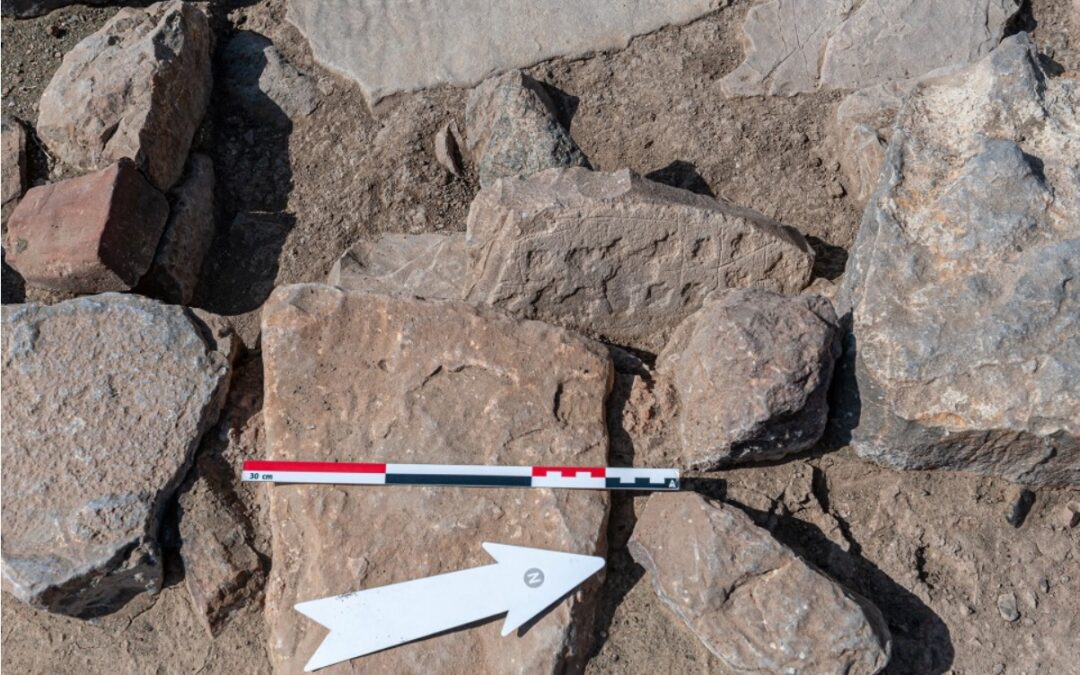A team of archaeologists from the University of Warsaw have discovered a stone board used for playing games 4,000 years ago (pictured above).
The find was made as part of excavations investigating settlement in the Bronze and Iron Ages in Oman’s Qumayrah Valley. The Omani-Polish project, funded by Poland’s National Science Centre, has also unearthed several towers as well as evidence of copper smelting.
The game board, found in one of the rooms of the settlement near the village of Ayn Badi Saidah, has fields marked on it as well as cup holes, said Piotr Bieliński from the Polish Centre of Mediterranean Archaeology at the University of Warsaw, who heads the project jointly with Sultan al-Bakri of the Omani Ministry of Heritage and Tourism.

The Polish-Omani team at work (photo: Polish Centre of Mediterranean Archaeology, University of Warsaw)
“The board is not a luxury item. It is hewn in the stone slightly clumsily but fulfils certain canons of games,” Bieliński told TVP, adding that the discovery of a game in such a location proves that such entertainment was available not just for rulers, but also for lower social classes.
“Such finds are rare, but several examples are known from India, Mesopotamia and even the Eastern Mediterranean basin,” Bieliński explained.
The most famous example of a similar game board – also dating back almost 4,000 years – was found at the Royal Cemetery at Ur in what is now southern Iraq.
The archaeologists hoped that their decision to dig near the strategically located village would produce results “in the same league” as other major sites, Bieliński explained. And they have not been disappointed.
“The settlement is exceptional for including at least four towers: three round ones and an angular one,” said his colleague Agnieszka Pieńkowska. “One of the round towers had not been visible on the surface despite its large size of up to 20 metres in diameter. It was only discovered during excavations.”
“We finally found proof of copper working at the site, as well as some copper objects,” added Bieliński. “This shows that our settlement participated in the lucrative copper trade for which Oman was famous at that time, with mentions of Omani copper present in the cuneiform texts from Mesopotamia.”
Main image credit: Polish Centre of Mediterranean Archaeology, University of Warsaw

Ben Koschalka is a translator and senior editor at Notes from Poland. Originally from Britain, he has lived in Kraków since 2005.



















